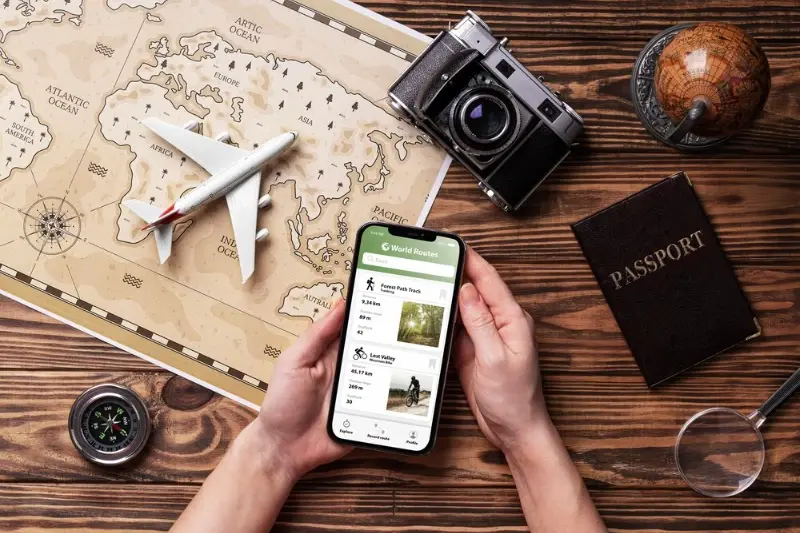International App Launch Disasters (and How to Avoid Them)
Last year, I watched a startup burn through £2.3 million in just six months trying to launch their fitness app across Europe. The app had been a massive hit in the UK—thousands of downloads, glowing reviews, everything looked perfect. But when they rolled it out to Germany, France, and Spain, something went horribly wrong. Users couldn't figure out how to sign up, complained about confusing payment options, and within weeks the app stores were flooded with one-star reviews. The founders had made every app localisation mistake in the book, and it cost them their company.
You'd think with all the success stories out there, businesses would have learned by now. But I keep seeing the same common mistakes repeated over and over again. Companies assume that if their app works in one country, it'll work everywhere else with just a quick translation. They couldn't be more wrong.
Taking an app global isn't just about changing the language—it's about understanding completely different ways of thinking, buying, and using technology.
The truth is, international app launches fail far more often than they succeed. Not because the original app was bad, but because teams underestimate just how different markets can be. From cultural colours that offend users to payment methods that simply don't exist, the list of potential disasters is longer than you might expect.
When Pokemon GO Failed in Japan: The Localisation Nightmare
You'd think launching Pokemon GO in Japan would be a guaranteed success—after all, Pokemon was born there. But Niantic's 2016 launch became one of the most spectacular app disasters I've witnessed in my years working with international launches. The irony wasn't lost on anyone in the mobile development world.
The problem wasn't cultural misunderstanding or payment issues. It was pure technical arrogance. Niantic had already seen the app crash servers worldwide, yet they launched in Japan without proper infrastructure scaling. Within hours, the servers buckled under the pressure of millions of eager Japanese players.
What Went Wrong
The localisation nightmare extended beyond server capacity. Niantic failed to account for Japan's unique mobile gaming culture and infrastructure needs:
- No collaboration with local mobile carriers for bandwidth management
- Insufficient server capacity for the anticipated user surge
- Poor communication with Japanese gaming communities
- Inadequate testing with local network conditions
- Rushed launch timeline that ignored technical warnings
The result? Frustrated players, negative press coverage, and a launch that should have been triumphant became a cautionary tale. Japanese players couldn't access the game for days, and when they could, it was plagued with connectivity issues. The lesson here is clear—technical localisation matters just as much as cultural adaptation.
The Starbucks App That Confused Europe
Starbucks thought they'd cracked the code with their mobile app success in America—mobile ordering, rewards, easy payments. Made perfect sense to roll it out across Europe, right? Well, not quite. The app that worked brilliantly in Seattle became a source of frustration in Stockholm.
The main problem wasn't the coffee (thankfully!), but the app localisation mistakes that left European customers scratching their heads. The rewards system was built around American spending habits—earning stars for purchases that cost twice as much in Europe. The payment integration failed to connect with popular European banking systems like iDEAL in the Netherlands or Klarna across Scandinavia.
What Went Wrong
The biggest issue was assuming European coffee culture matched American habits. The app pushed mobile ordering for quick pickup, but many European customers prefer the social experience of ordering in-store. Some countries had different loyalty expectations too—Germans wanted detailed receipts and transaction history, whilst the simplified American interface felt incomplete.
Always research local user behaviour before launching internationally. What works in your home market might feel completely wrong elsewhere.
- Payment methods weren't localised for each country
- Rewards system didn't account for different pricing structures
- User interface ignored cultural preferences for detail levels
- Mobile ordering assumed coffee culture similarities that didn't exist
The lesson? Even global brands need local thinking when it comes to app functionality and user experience.
Why Direct Translation Kills Apps
I've seen so many brilliant apps fail internationally because someone thought Google Translate was good enough for localisation. Spoiler alert—it's not! Direct translation is one of the fastest ways to confuse users and destroy your app's reputation in new markets.
The problem isn't just about getting words wrong (though that happens plenty). It's about context, cultural meaning, and how people actually speak. When you translate "Sign Up" directly into German, you might get "Anmelden"—but German users expect "Registrieren" for creating new accounts. Small difference, big confusion.
The Hidden Costs of Bad Translation
Here's what happens when you rely on direct translation:
- Users can't understand basic functions
- App store ratings plummet in international markets
- Customer support gets flooded with confused users
- Your brand looks unprofessional and careless
- Marketing messages lose their impact completely
I worked with a fitness app that translated "workout" as "arbeiten" in German—which means "to work" not "exercise." Users thought it was a productivity app! The lesson? Invest in proper localisation from native speakers who understand your target market. Your international users will thank you, and your download numbers will too.
Cultural Colours and Icons That Backfire
Colours and icons seem harmless enough, right? Wrong. I've seen plenty of apps crash and burn because developers assumed their visual choices would work everywhere. What looks perfect in London might be completely wrong in Beijing—and these app localisation mistakes can destroy your launch before it even starts.
Take the colour red, for instance. In Western markets, red often means danger or error messages. But in China, red represents good luck and prosperity. If your app uses red warning notifications, Chinese users might think you're celebrating their mistakes! White presents another problem—while it symbolises purity in many Western cultures, it's associated with death and mourning in several Asian countries.
We learned the hard way that our thumbs-up icon meant absolutely nothing to users in parts of the Middle East where it's considered rude
Icons cause just as many headaches. The innocent thumbs-up gesture that works brilliantly in American apps? It's offensive in parts of the Middle East. Even something as simple as a mailbox icon can confuse users—postal systems look different worldwide, so your cute red postbox might not make sense to someone who's never seen one. Religious symbols, hand gestures, and even animal icons can trigger unexpected reactions depending on local beliefs and cultural taboos.
Payment Methods That Don't Work Abroad
One of the biggest mistakes I see apps make when launching internationally is assuming their payment system will work everywhere. You'd be amazed how many times I've had clients come to me after their app launched in a new country, only to discover nobody could actually pay for anything!
Take credit cards—in many Western countries, we assume everyone has one. But in large parts of Asia, Africa, and South America, cash is still king. Mobile payment systems like Alipay dominate in China, whilst UPI has taken over in India. If your app only accepts Visa or Mastercard, you're shutting out millions of potential customers.
The Banking Reality Check
Then there's the banking infrastructure issue. Some countries have strict regulations about foreign payment processors; others have unreliable internet connections that make complex payment flows impossible. I've seen apps fail completely because they required users to enter long card numbers on slow mobile networks.
The solution? Research local payment preferences before you launch—not after. Partner with local payment providers and always offer multiple options. PayPal might work in the UK, but it's practically useless in many developing markets where mobile money transfers are the norm.
Legal Compliance Mistakes That Cost Millions
I've watched brilliant apps with massive potential get completely shut down because they ignored local laws. It's heartbreaking really—months of development work, thousands in marketing spend, all gone because someone didn't check what was actually legal in their target market.
The biggest mistake I see is assuming data protection laws are the same everywhere. What works in one country can land you with massive fines in another. Take GDPR in Europe—it's not just about having a privacy policy anymore. You need explicit consent for data collection, the right to be forgotten, and proper data storage protocols. Miss any of these and you're looking at fines that can reach millions.
Payment and Age Restrictions
Then there's payment regulations. Some countries have strict rules about in-app purchases, especially for games. South Korea requires disclosure of loot box odds, whilst Belgium has banned them entirely in some cases. Age verification requirements vary wildly too—what's acceptable for a 13-year-old in the US might require parental consent elsewhere.
Content regulations can be even trickier. Religious imagery, political references, even certain colours can cause problems in different markets. I've seen apps banned simply because they used the wrong shade of green in a particular region.
Always consult local legal experts before launching in new markets. The cost of proper legal advice is tiny compared to potential fines and lost revenue from app store removals.
Building Your International Launch Strategy
Right, so you've read about all the ways apps can fail internationally—now let's talk about how to actually get it right. After working with brands launching across dozens of countries, I can tell you that success comes down to planning, not luck.
Start Small and Test Everything
Here's what I tell every client: don't launch in twenty countries at once. Pick two or three markets that make sense for your app and test there first. Maybe start with English-speaking countries if you're from the UK—Australia, Canada, or Ireland are good testing grounds. You'll learn loads about what works and what doesn't without spreading yourself too thin.
Test your translated content with real users before you go live. Google Translate might be free, but it's not going to catch cultural nuances that could make your app sound completely wrong. Get native speakers to review everything—and I mean everything, including your app store descriptions.
Build a Localisation Checklist
Create a proper checklist covering language, payment methods, legal requirements, cultural considerations, and technical requirements like currency formatting. Don't forget about customer support either—people will need help in their own language. Understanding the legal requirements for international app launches is crucial, and having this checklist will save you countless headaches and potentially embarrassing mistakes down the line.
Conclusion
I've worked with clients who've spent thousands fixing app localisation disasters that could have been avoided with proper planning from the start. The examples we've covered—from Pokemon GO's server meltdown in Japan to Starbucks confusing European customers—all share one thing in common: they rushed into international markets without understanding what local users actually needed.
The biggest mistake I see is treating app localisation as a translation job rather than a complete cultural adaptation. Your app might work perfectly in your home market, but success abroad requires understanding payment preferences, legal requirements, colour meanings, and even basic user behaviour patterns. These aren't small details—they're the difference between launching successfully and watching your app fail spectacularly.
Common mistakes like direct translation, ignoring local payment methods, and overlooking cultural sensitivities will cost you users and money. But here's what I've learned after years of helping companies expand internationally: the brands that invest time in proper localisation research and testing don't just avoid disasters—they often outperform their domestic success rates.
Take the time to understand your target markets before you launch. Your international users will thank you for it, and your app store ratings will too.
Share this
Subscribe To Our Blog
You May Also Like
These Related Stories

The Ultimate Guide to Travel App Development: From Idea to Launch

App Feasibility Mistakes That Cost Developers Millions





